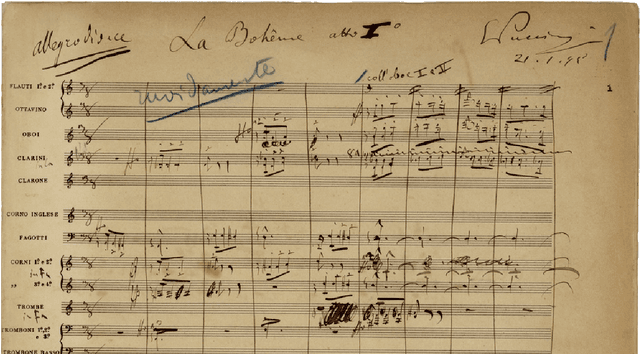Luca Andrea Ludovico
Optical Music Recognition in Manuscripts from the Ricordi Archive
Aug 14, 2024



Abstract:The Ricordi archive, a prestigious collection of significant musical manuscripts from renowned opera composers such as Donizetti, Verdi and Puccini, has been digitized. This process has allowed us to automatically extract samples that represent various musical elements depicted on the manuscripts, including notes, staves, clefs, erasures, and composer's annotations, among others. To distinguish between digitization noise and actual music elements, a subset of these images was meticulously grouped and labeled by multiple individuals into several classes. After assessing the consistency of the annotations, we trained multiple neural network-based classifiers to differentiate between the identified music elements. The primary objective of this study was to evaluate the reliability of these classifiers, with the ultimate goal of using them for the automatic categorization of the remaining unannotated data set. The dataset, complemented by manual annotations, models, and source code used in these experiments are publicly accessible for replication purposes.
A Sonification of the zCOSMOS Galaxy Dataset
Feb 11, 2022



Abstract:Sonification is the transformation of data into acoustic signals, achievable through different techniques. Sonification can be defined as a way to represent data values and relations as perceivable sounds, aiming at facilitating their communication and interpretation. Like data visualization provides meaning via images, sonification conveys meaning via sound. Sonification approaches are useful in a number of scenario. A first case is the possibility to receive information while keeping other sensory channels free, like in medical environment, in driving experience, etc. Another scenario addresses an easier recognition of patterns when data present high dimensionality and cardinality. Finally, sonification can be applied to presentation and dissemination initiatives, also with artistic goals. The zCOSMOS dataset contains detailed data about almost 20000 galaxies, describing the evolution of a relatively small portion of the universe in the last 10 million years in terms of galaxy mass, absolute luminosity, redshift, distance, age, and star formation rate. The present paper proposes a sonification for the mentioned dataset, with the following goals: i) providing a general description of the dataset, accessible via sound, which could also make unnoticed patterns emerge; ii) realizing an artistic but scientifically accurate sonic portrait of a portion of the universe, thus filling the gap between art and science in the context of scientific dissemination and so-called "edutainment"; iii) adding value to the dataset, since also scientific data and achievements must be considered as a cultural heritage that needs to be preserved and enhanced. Both scientific and technological aspects of the sonification are addressed.
* 18 pages, 6 figures
 Add to Chrome
Add to Chrome Add to Firefox
Add to Firefox Add to Edge
Add to Edge